APAH: Unit 5 - Chinese, Japanese, & Korean Art
1/59
Earn XP
Description and Tags
Name | Mastery | Learn | Test | Matching | Spaced |
|---|
No study sessions yet.
60 Terms
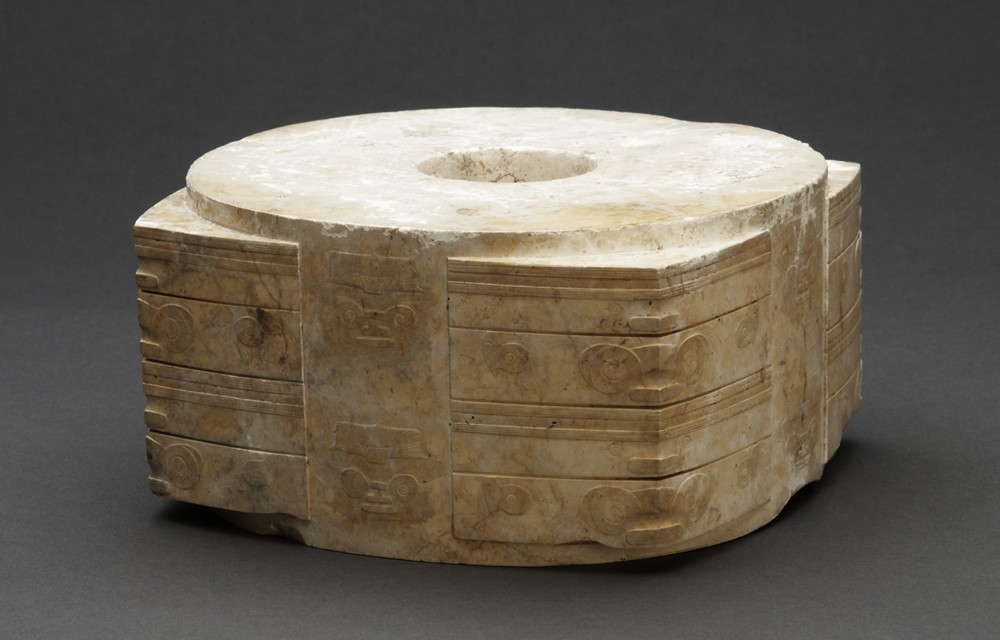
Jade kong
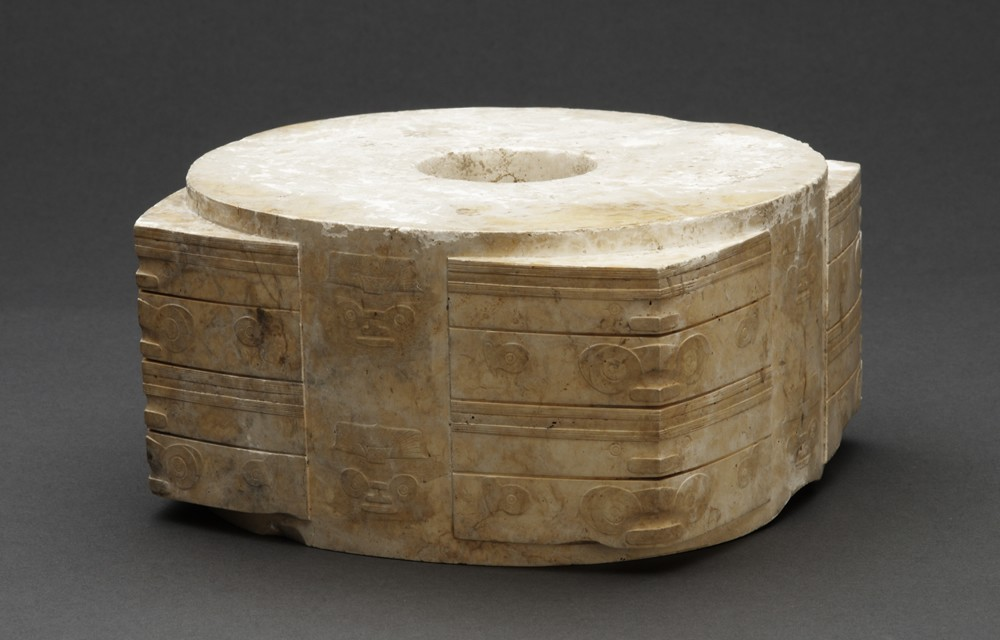
Jade kong (culture & location)
Chinese; Longzhu, China

Jade kong (date & material)
3,300-2,200 BCE; jade

Jade kong (use & facts)
cylinder & circle represent realms of life and death?
jade is hard & translucent
found at grave sights
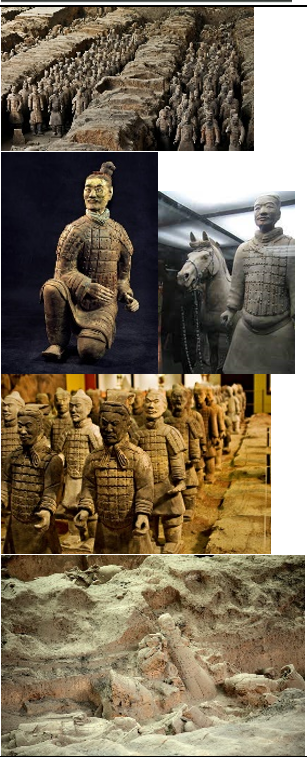
Terracotta Army & Tomb of Emperor Shi Huangdi
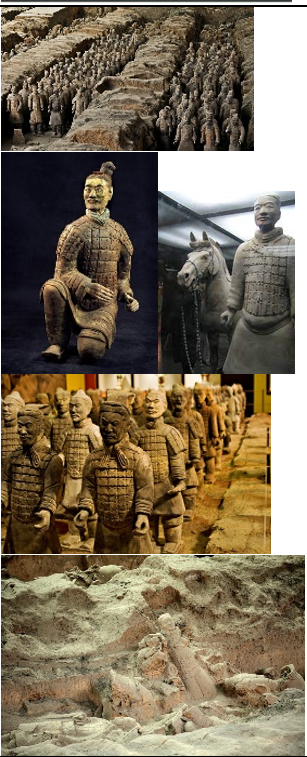
Terracotta Army & Tomb of Emperor Shi Huangdi (culture & location)
Chinese; Lintong, China
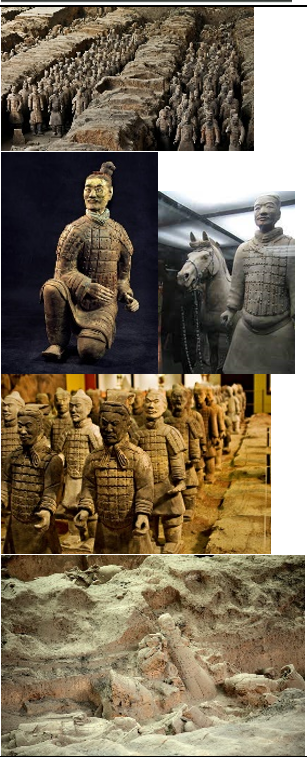
Terracotta Army & Tomb of Emperor Shi Huangdi (date & material)
221-209 BCE; painted terracotta
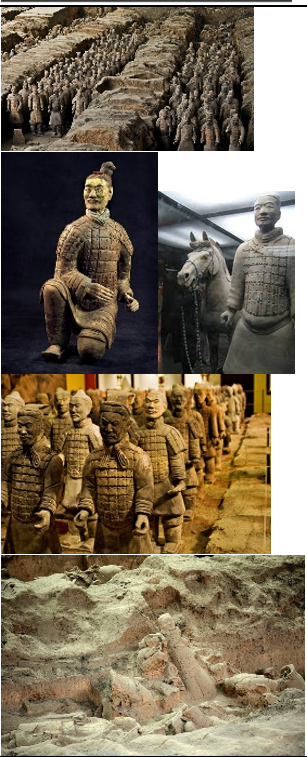
Terracotta Army & Tomb of Emperor Shi Huangdi (use & facts)
protect emperor in death
discovered in 1973 by farmers
8000 full sized (& taller) warriors & horses
2000 years old
individual heads represent diversity
mass production of bodies by slaves or indentured servants
put together in parts
also chariots, weapons, bureaucrats, & entertainers
original bright colors have faded over time
necropolis began at his birth
artists signed the bottom of each figure (killed if work flawed)
Shi Huangdi (patron) buried workmen alive when they were finished
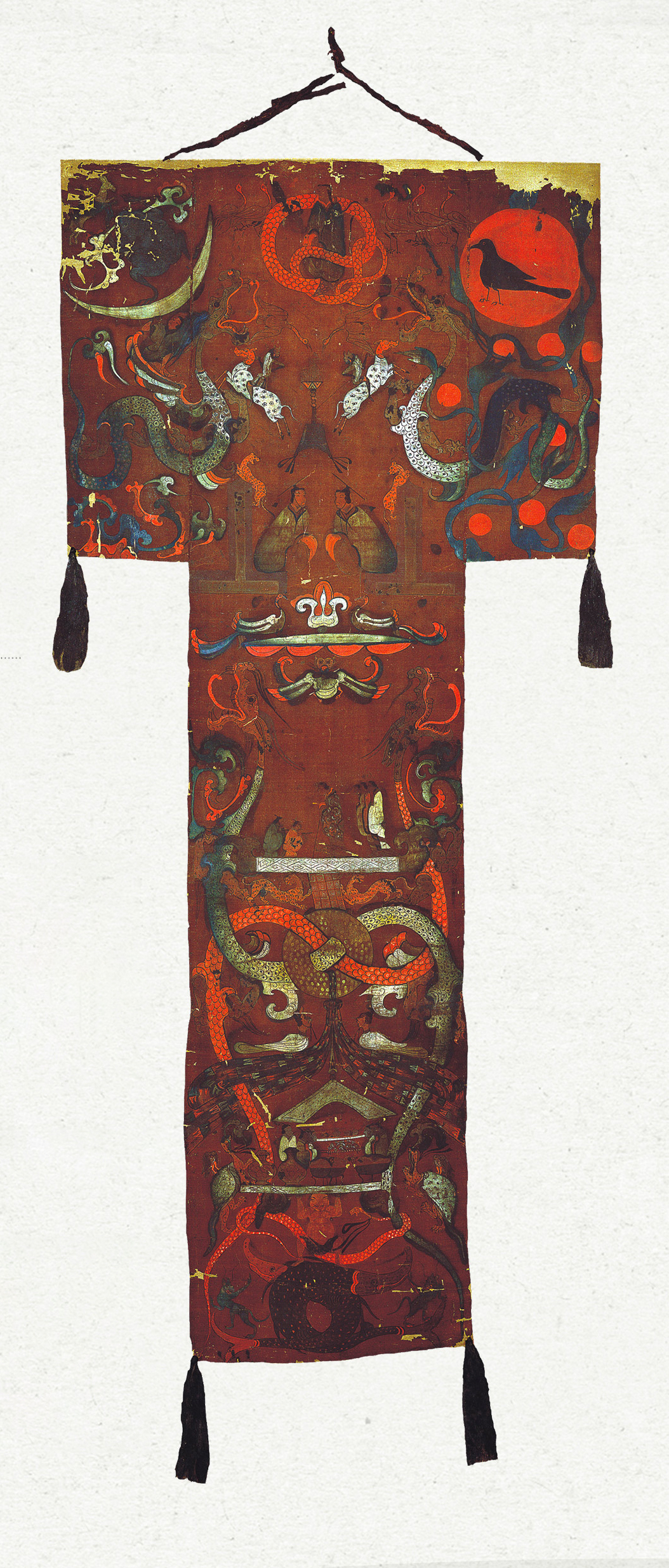
Funeral Banner of Lady Dai
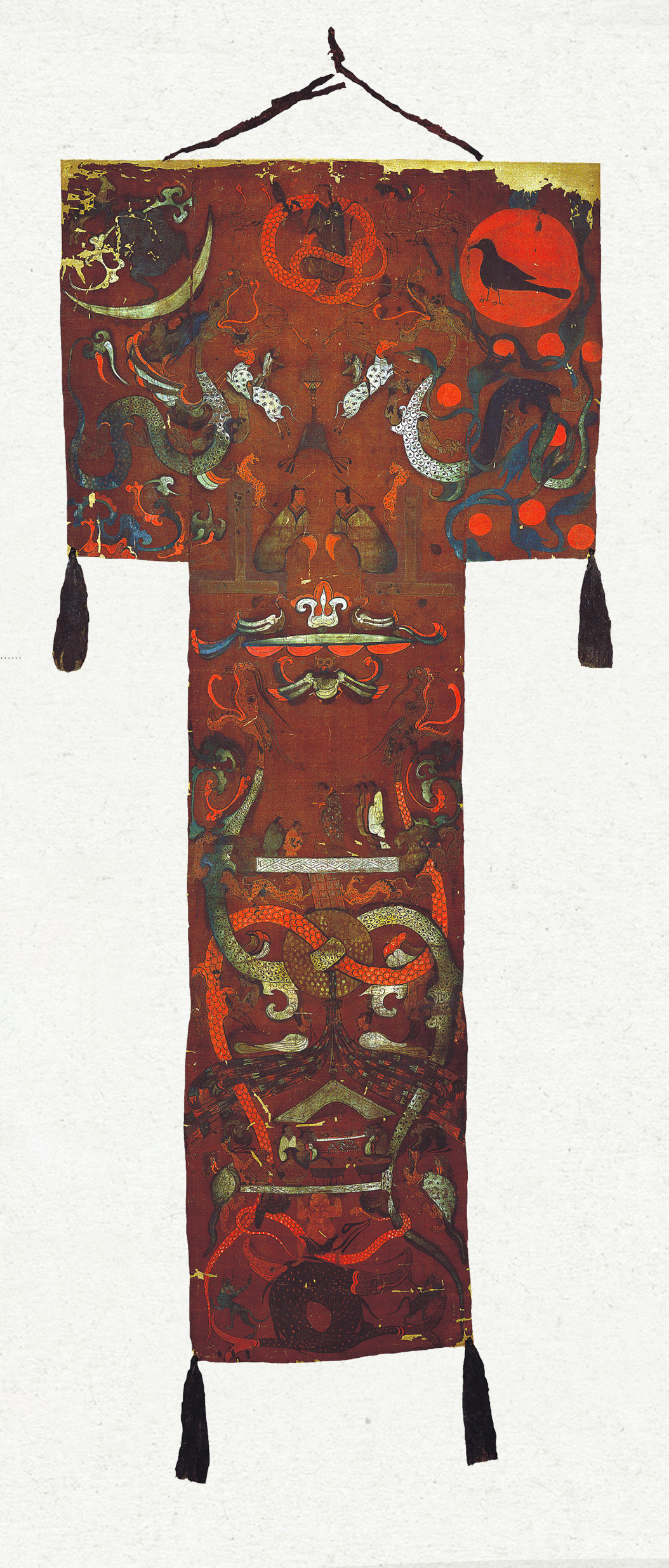
Funeral Banner of Lady Dai (culture & location)
Han Dynasty; Mawangdui, China

Funeral Banner of Lady Dai (date & material)
180 BCE; painted silk
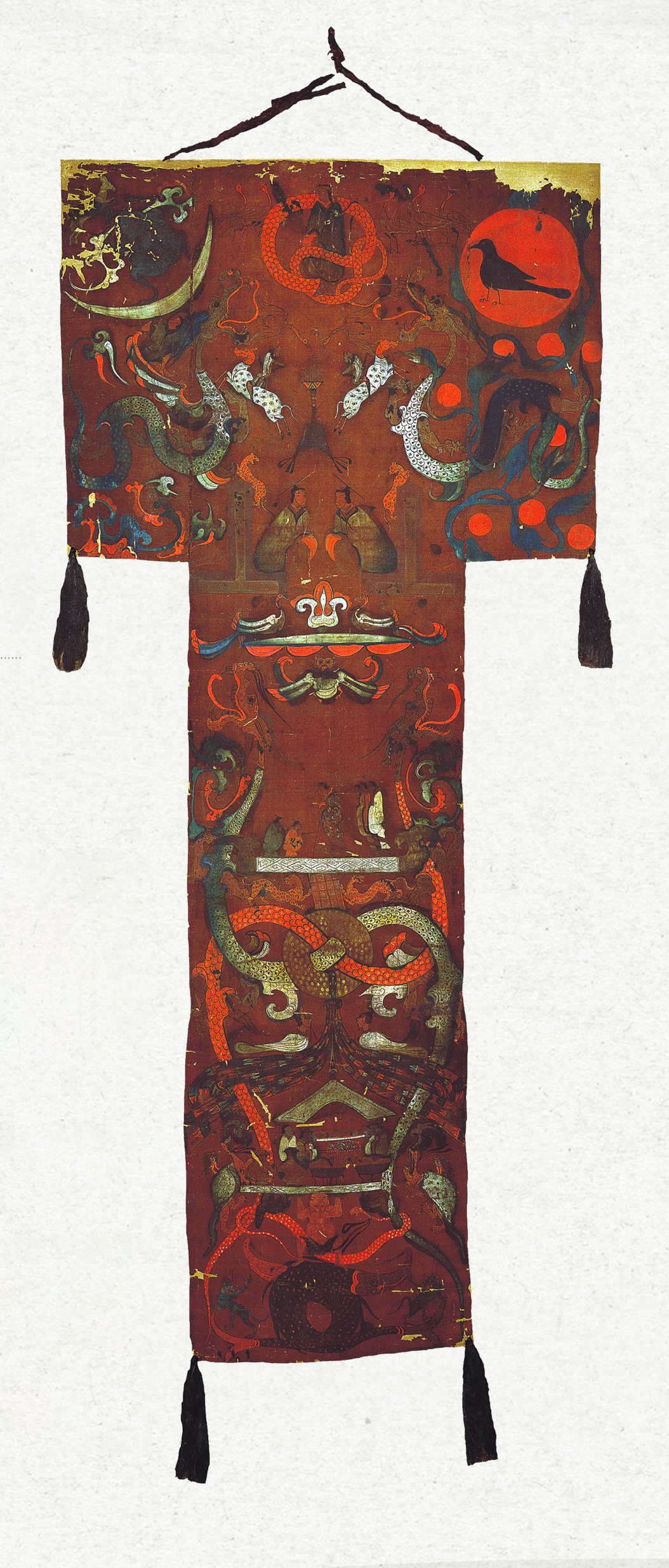
Funeral Banner of Lady Dai (use & facts)
used in funeral procession & ceremony
registers show different realms: heaven, Lady Dai & her attendants, body of Lady Dai with mourners, & underworld
shows Lady Dai’s soul ascending to heaven
Han Dynasty obsessed with immortality
found in tomb with 1400+ objects of silk, wood, bamboo, pottery, clothing, & food

Longmen Caves
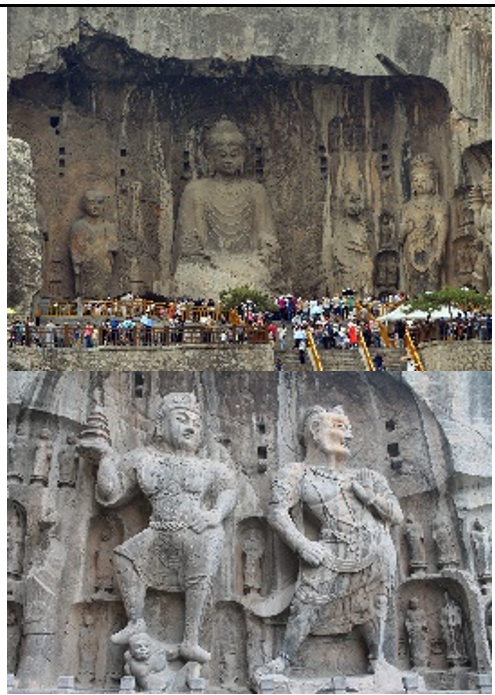
Longmen Caves (culture & location)
Tang Dynasty; banks of Yi River (China)
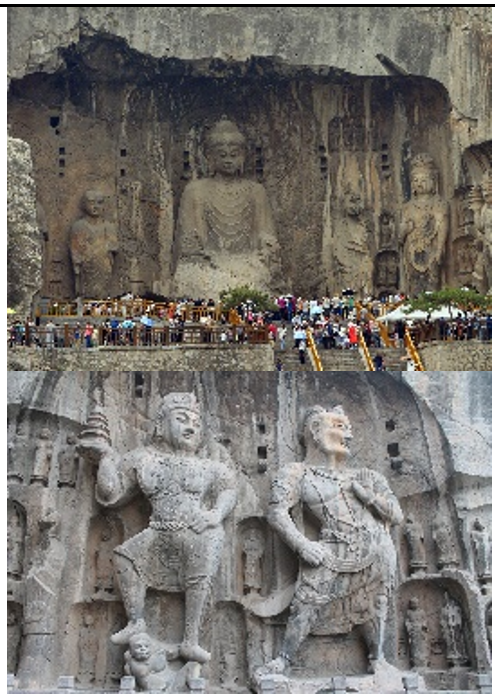
Longmen Caves (date & material)
493-1127 CE; limestone
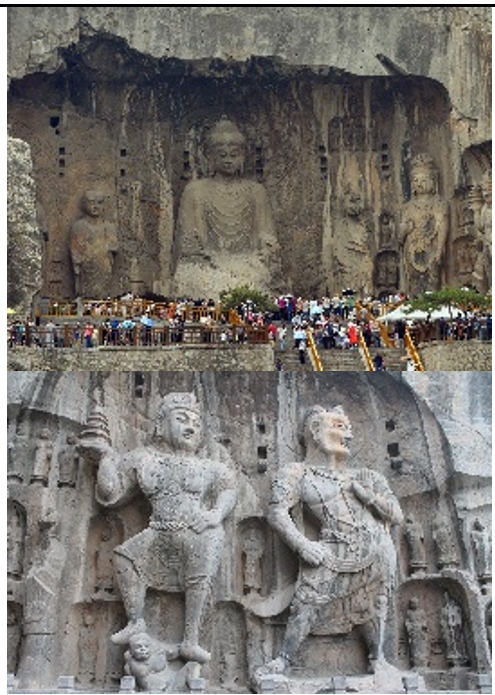
Longmen Caves (use & facts)
worship site for Buddhists
Vairocana Buddha (celestial Buddha) on altar with bodhisattvas (achieved & enlightenment but stay on earth to help others), monks, & guardians
built using private funds of patroness Empress Wei Zetain
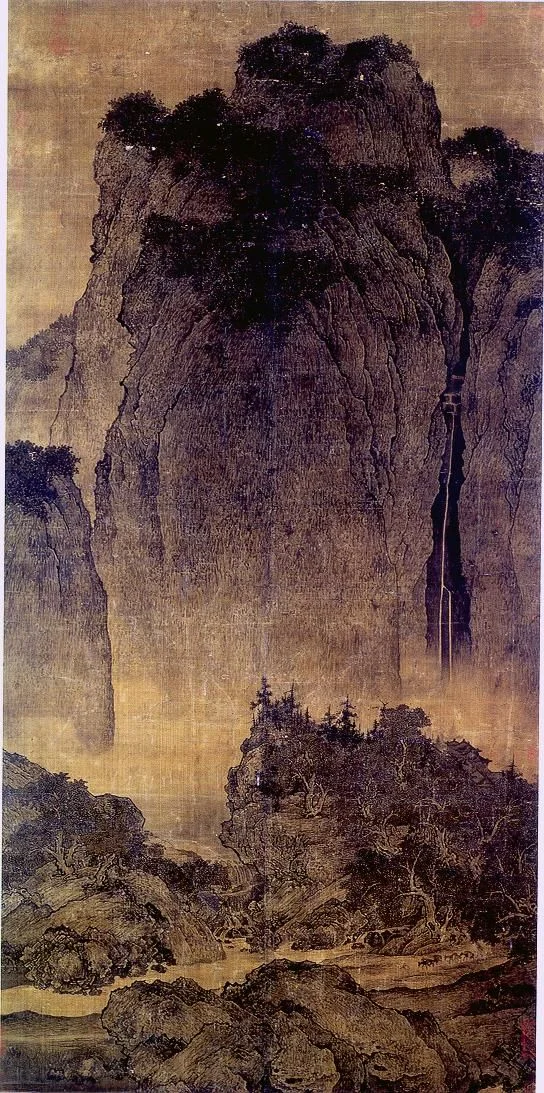
Travelers Among Mountains and Streams
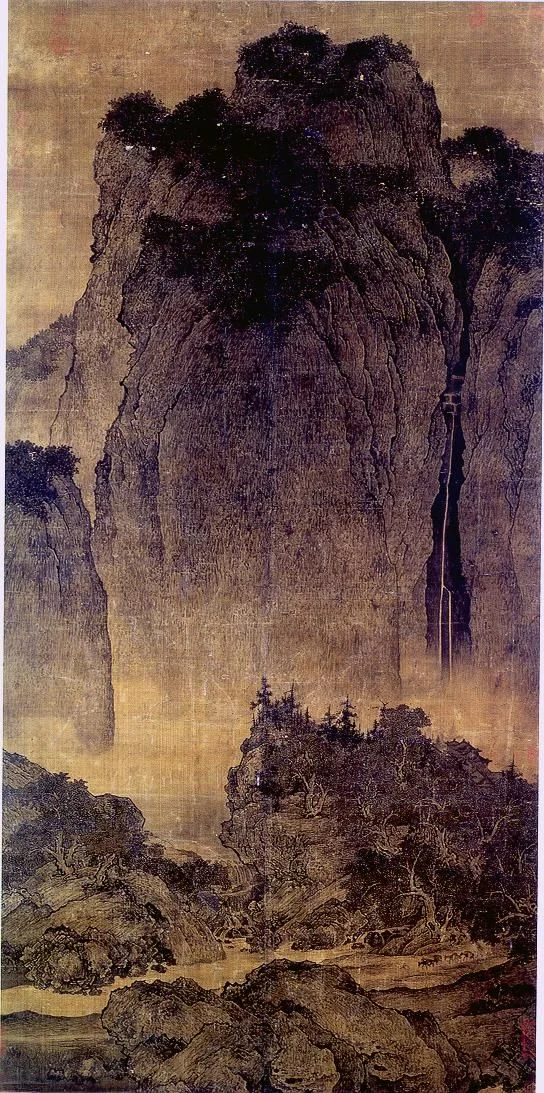
Travelers Among Mountains and Streams (culture & creator)
Song Dynasty China; Fan Kuan
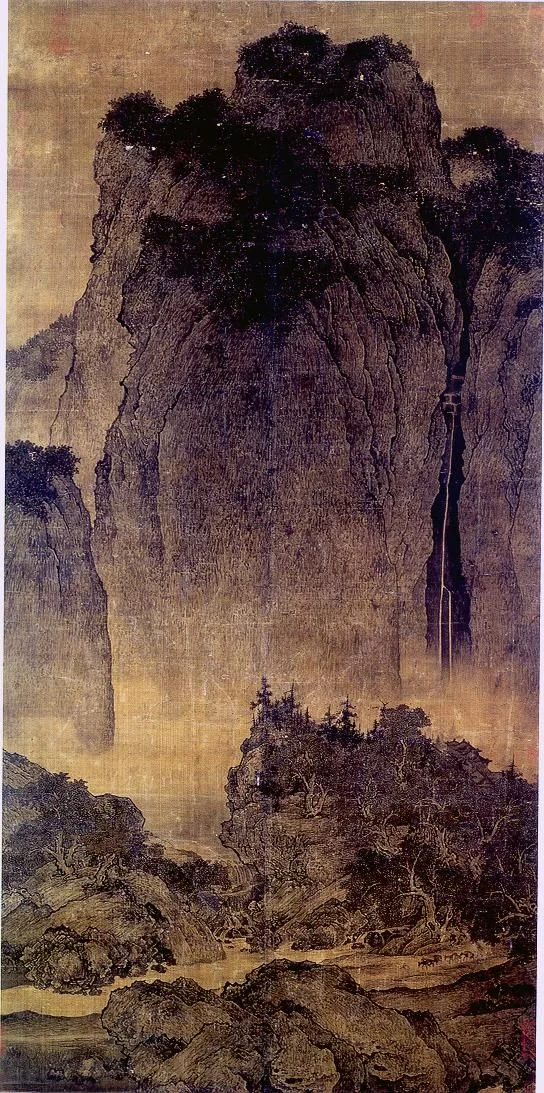
Travelers Among Mountains and Streams (date & material)
960-1279 CE; ink & color on silk
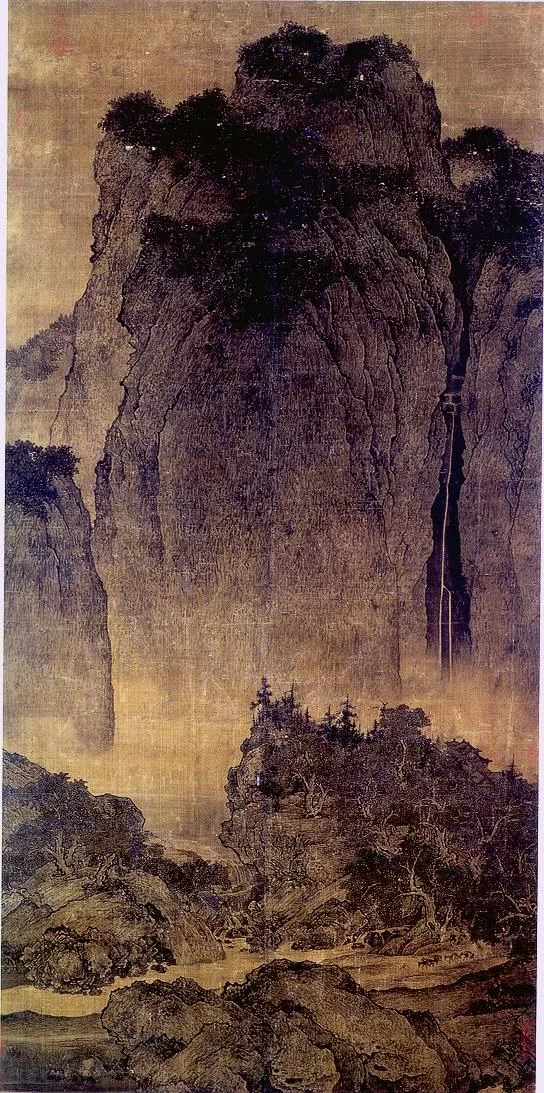
Travelers Among Mountains and Streams (use & facts)
used as a piece to contemplate/meditate in Daoism
seven-foot-tall hanging scroll
“most famous of all Chinese landscape”
classic Chinese perspective of 3 planes – near, middle (water & mist), & far
Fan Kuan used overlapping forms of fore-, middle, & background to create the illusion of deep space
theme is grandeur of natures
can see mule train at base of towering cliff
student of Li Ch’eng
wonder of nature = Daoist

David Vases
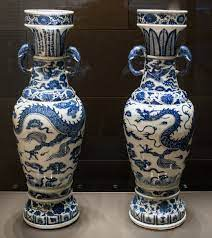
David Vases (culture & location)
Chinese; Xingyuan, China

David Vases (date & material)
1351 CE; porcelain with cobalt blue underglaze
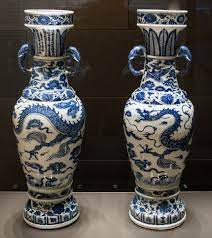
David Vases (use & facts)
Made with incense burner to be used on Daoist altar in a Daoist temple
inscription on one vase explains for whom it was destined
porcelain is type of Chinese clay fired very hot to become white
blue color traded for from Iran
made in Mongol empire or Yuan dynasty
earliest blue & white ware
elephant head handles
flowers & leaves, & traditional Chinese dragons
named after Sir David, collector
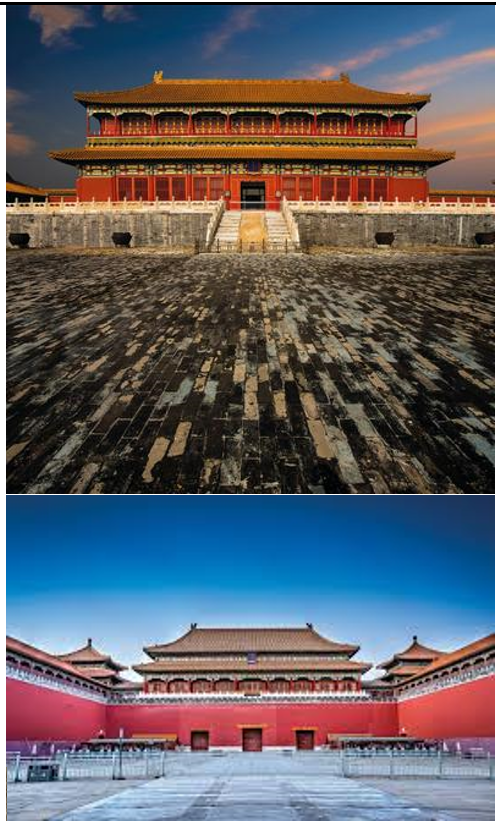
Forbidden City
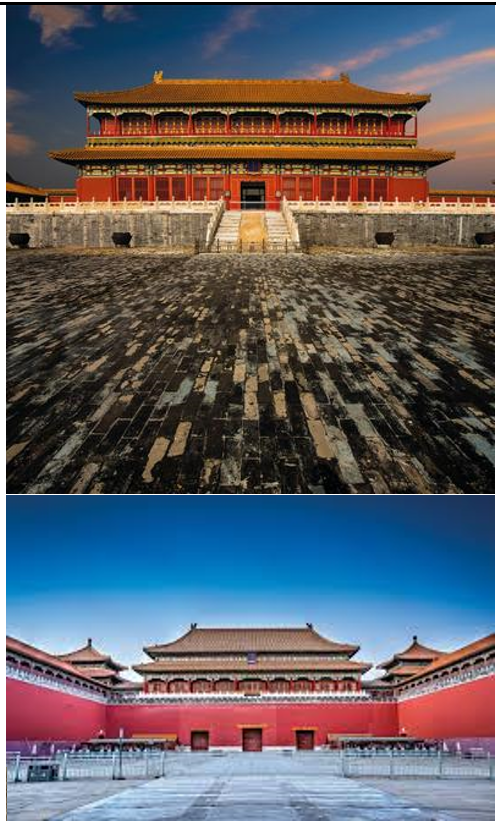
Forbidden City (culture & location)
Ming Dynasty; Beijing, China
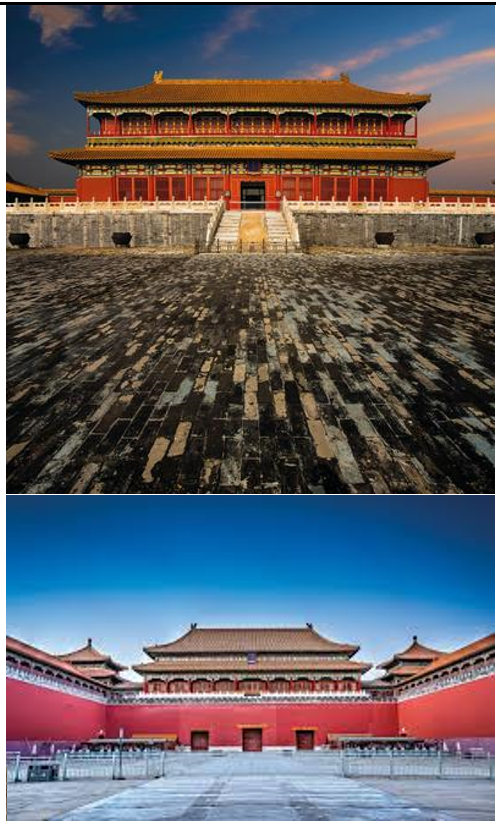
Forbidden City (date & material)
15th century CE; wood, brick, & marble
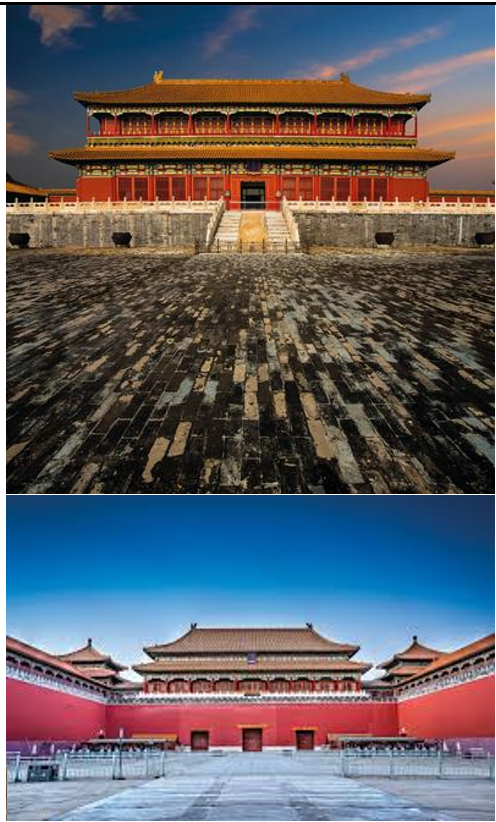
Forbidden City (use & facts)
palace
Hall of Supreme Harmony – throne room/seat of power
place of new years festival, winter solstice, & emperor’s bday
yellow roofs with red painted beams on marble foundation
animals on roof “prevent fire”
9000 rooms, largest Chinese architecture complex & 30 ft high walls
forbidden = no one enters or leaves without permission
built on North-South & East-West axis
lots of dragon motifs = emperor
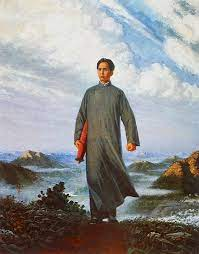
Chaiman Mao en Route to Anyuan
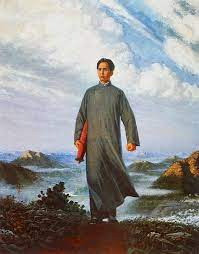
Chaiman Mao en Route to Anyuan (location & creator)
Chinese; Liu Chunhua
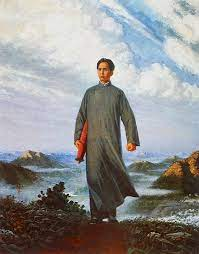
Chaiman Mao en Route to Anyuan (date & material)
1967 CE; oil on canvas

Chaiman Mao en Route to Anyuan (use & facts)
propganda supporting Mao
painted at beginning of Cultural Revolution
during this time artists created portraits of Mao to help him regain hold after political struggles
distract from disasters of 1950s – famine & deaths after Great Leap Forward (modernization of China)
uses socialist realism to portray Mao as revolutionary leader ready to fight for common people
Mao’s size (larger than mountains) reflects artist’s message that he is hugely important to Chinese Society

Portrait of Sin Sukju
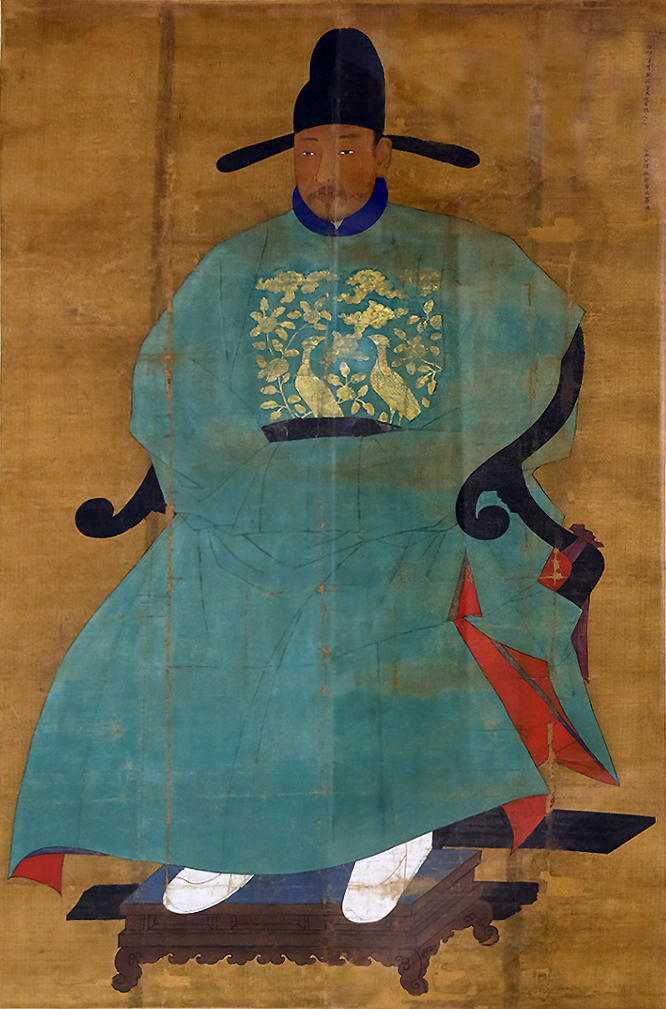
Portrait of Sin Sukju (culture)
Korean
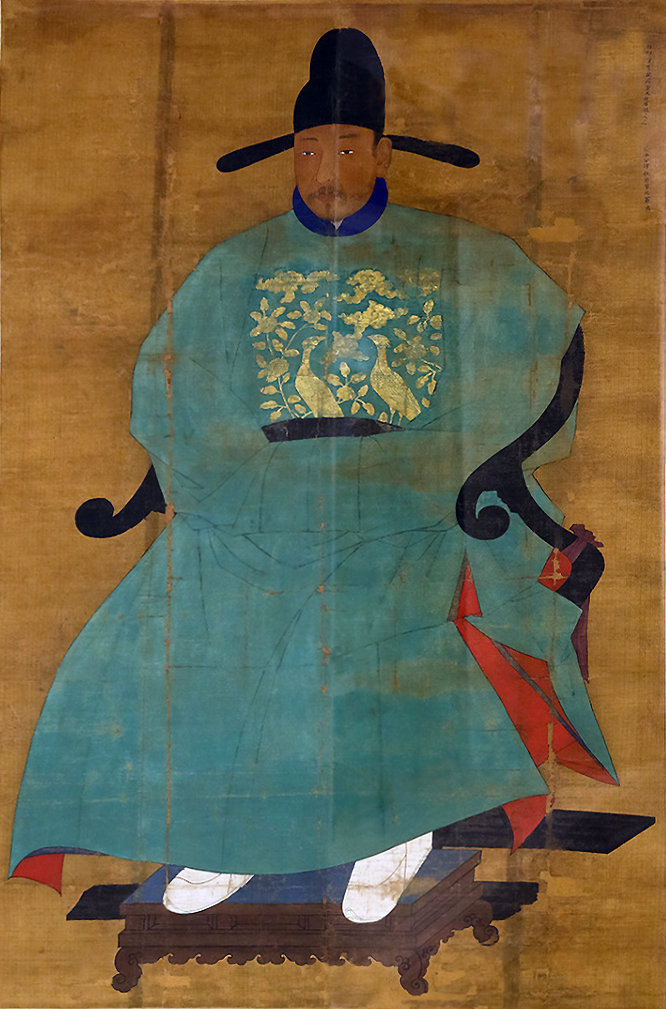
Portrait of Sin Sukju (date & material)
1417-1475 CE; ink on silk, hanging scroll
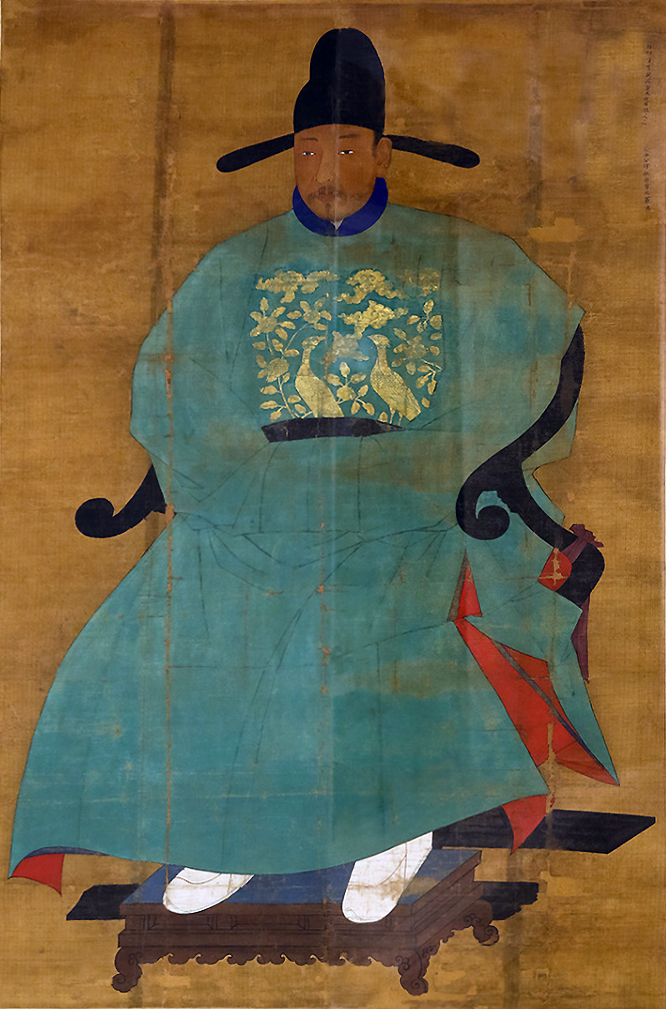
Portrait of Sin Sukju (use & facts)
used in ancestor worship to show filial piety in rituals
scholar & prime minister
portrait shows his contributions to the state of Korea
“meritorious subject”

Crown of the Silla Kingdom
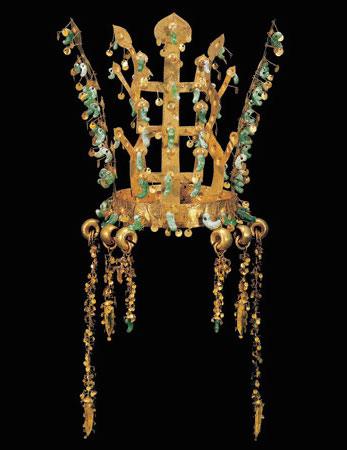
Crown of the Silla Kingdom (culture & location)
Korean; Korea
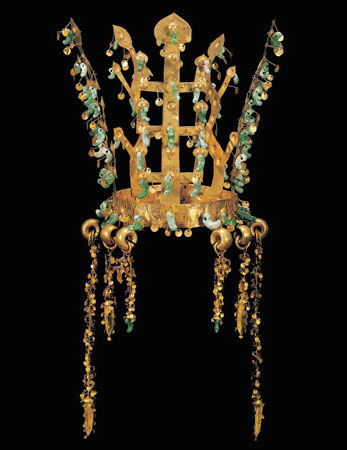
Crown of the Silla Kingdom (date & material)
5th-6th century CE; gold & jade

Crown of the Silla Kingdom (use & facts)
uesd in death & some royal ceremonies
geometric trees & antlers from Siberia
tree represents sacred tree of Gyeongju (capital), thought to be axis mundi
no Chinese influence
fragile
attached to the “branches” are tiny gold discs& jade ornaments called gogok (ripe fruits symbolizing fertility & abundance)
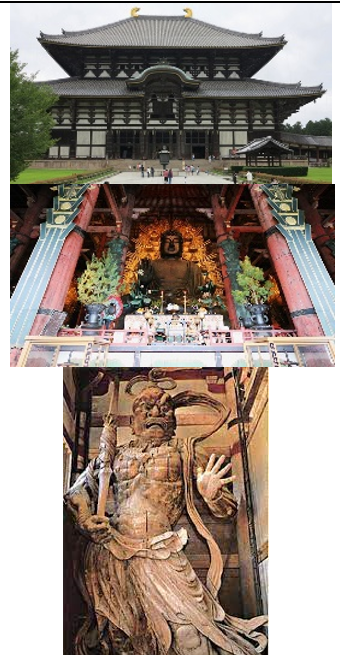
Todai-ji Temple

Todai-ji Temple (culture & location)
Japanese; Nara, Japan

Todai-ji Temple (date & material)
743 CE; wood (cypress)
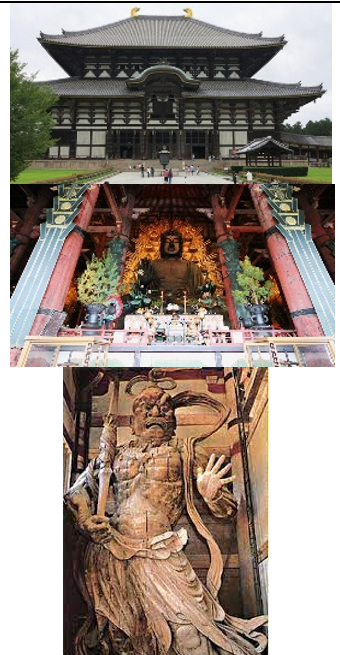
Todai-ji Temple (use & facts)
Buddhist temple
damaged by warfare with multiple restorations
original parts are statue on lotus petal-throne & drapery
also 8+ft Nio Guardian figures found here
figures made using joint block technique with outer wood carved & painted (c. 1203 CE)
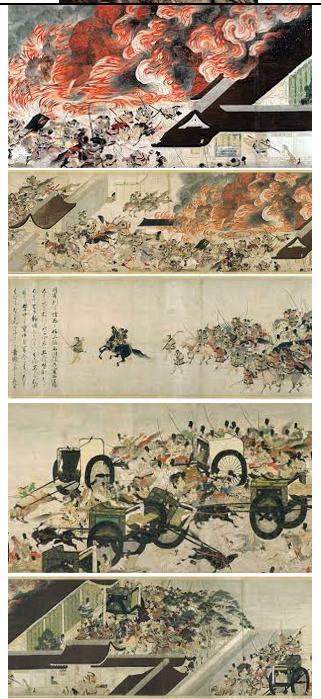
Night Attack at Sanjo Palace
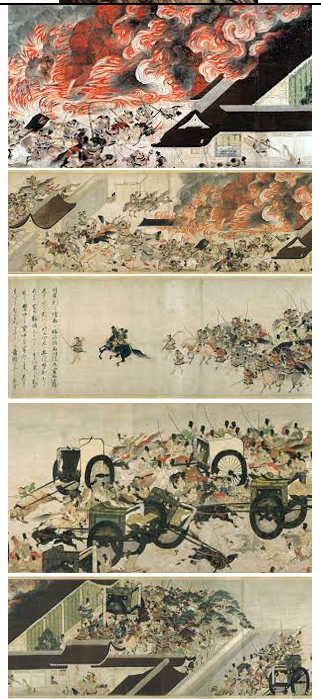
Night Attack at Sanjo Palace (culture)
Japanese

Night Attack at Sanjo Palace (date & material)
1250-1300 CE; ink & color on paper
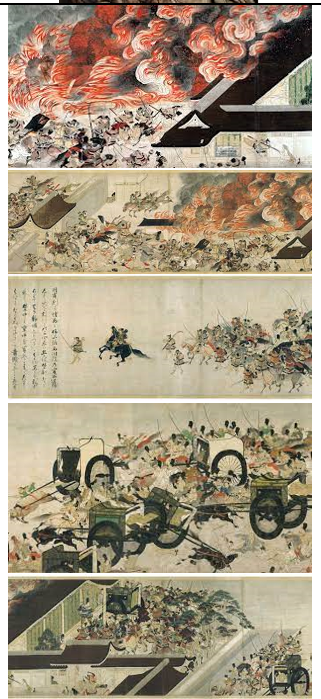
Night Attack at Sanjo Palace (use & facts)
preserving history (from pov of victor)
Japanese Kamakura period
painted 100 years after event
swift, active brushstrokes, elevated point of view, diagonals-for movement
narrative read right to left
military rule had interest in “code of warrior”
type of painted called emaki (picture scroll)

Ryoan-ji Dry Garden
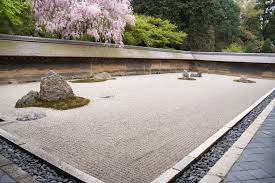
Ryoan-ji Dry Garden (culture & location)
Japanese; Kyoto, Japan
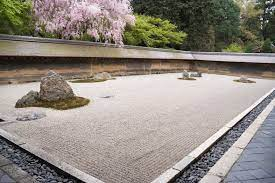
Ryoan-ji Dry Garden (date & material)
c. early 16th century CE; Rocks, water, moss, pruned trees, & bushes, gravel/sand
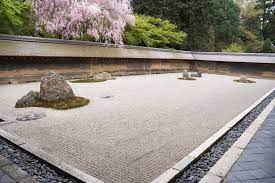
Ryoan-ji Dry Garden (use & facts)
place of meditation
Japanese rock garden, “dry landscape” = Zen garden
miniature stylized landscape
larger rock formations arranged in field of smooth pebbles raked into linear patters that facilitate meditation
wavy patterns represent water, rocks are mountain ranges
asymmetrical, not all seen at once
bounded by low yellow wall
focus for meditation
made during Muromachi period (1392-1573)
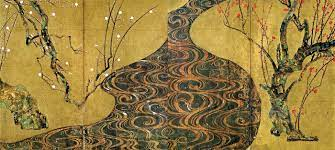
White and Red Plum Blossoms
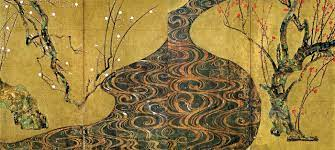
White and Red Plum Blossoms (culture & creator)
Japanese; Ogata Korin
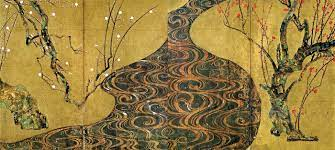
White and Red Plum Blossoms (date & material)
1710-1716 CE; watercolor on paper, gold leaf background
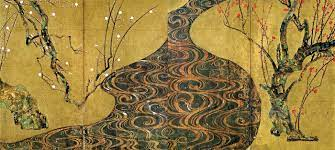
White and Red Plum Blossoms (use & facts)
created for wealthy patron
painted in black ink & blotchy washes of mineral color on pair of folding screens
both abstract & realistic
gold leaf background negates place & time & gives ethereal glow
stylized water, realistic plum trees
Rinpa = combination of abstraction, naturalism, monumental presence, dynamism, & sensuality
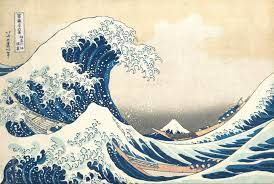
Under the Great Wave
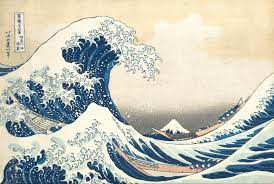
Under the Great Wave (culture & creator)
Japanese; Hokusai
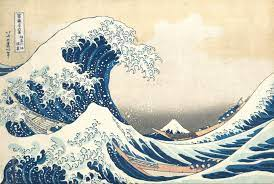
Under the Great Wave (date & material)
1830 CE; ink & color on paper
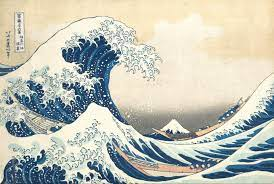
Under the Great Wave (use & facts)
part of series of prints hoping to increase tourism revenue in Japan
if asked to attribute a work, if it depicts Mt. Fuji = Hokusai
part of a series of woodblock prints called Thirty-six views of Mt. Fuji
ukiyo-e prints (name for type of prints this work is apart of)
contrast heightens tension
use of western perspective
cobalt blue pigment = western influence